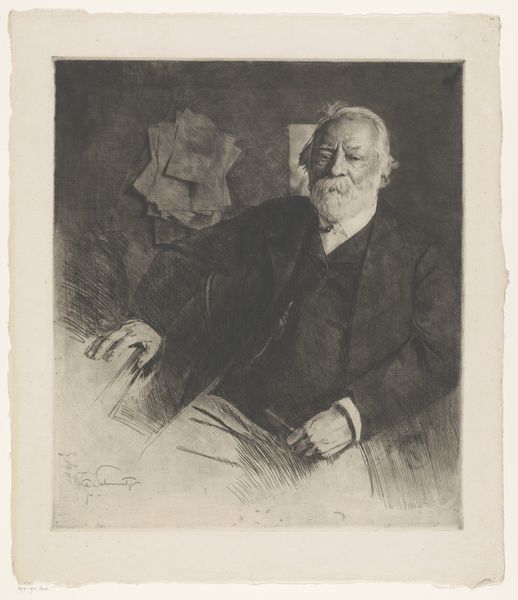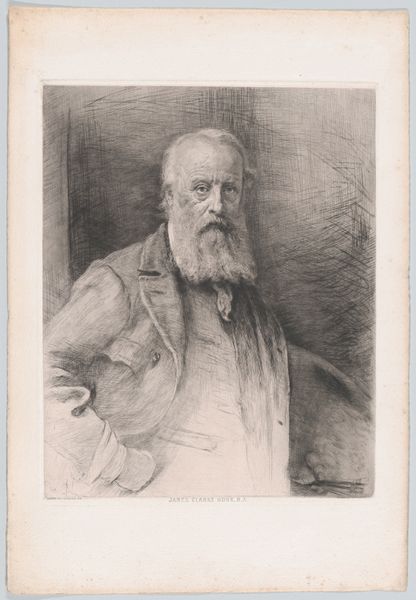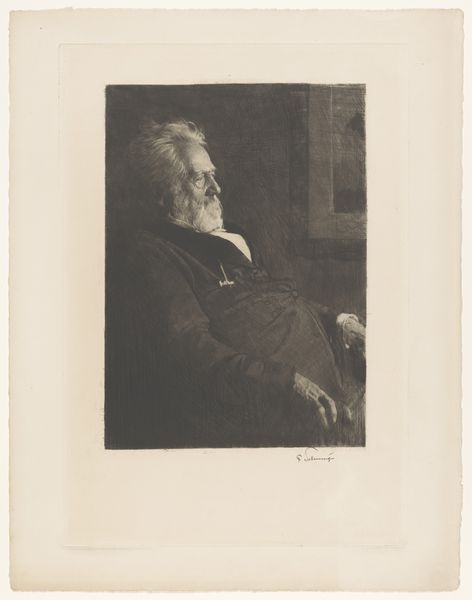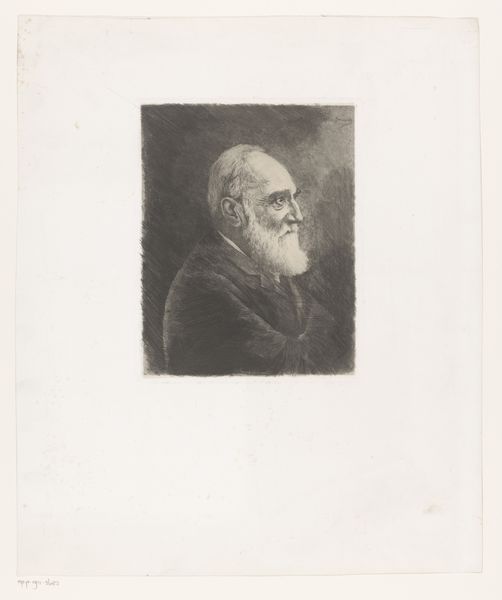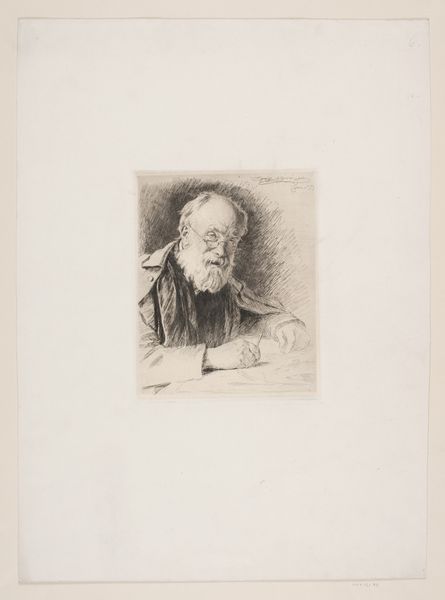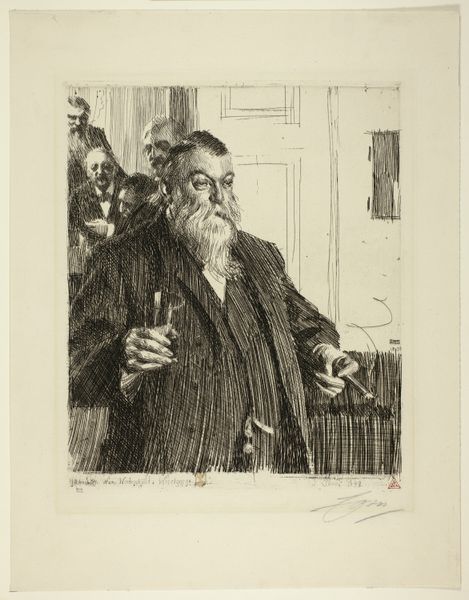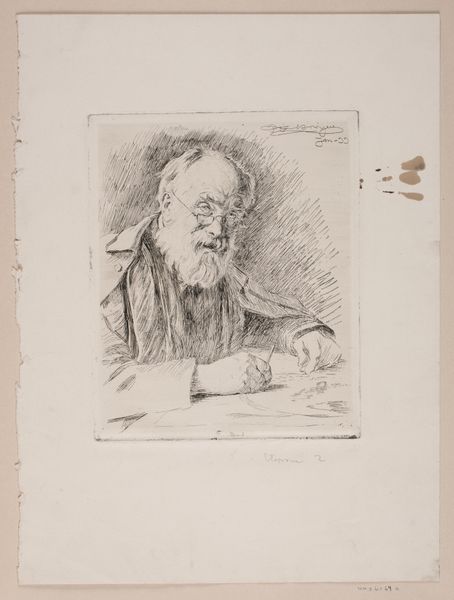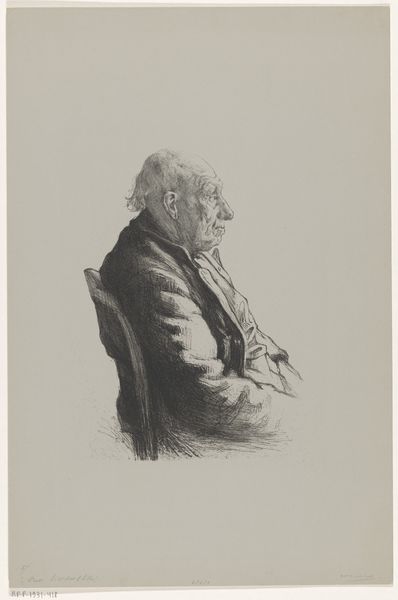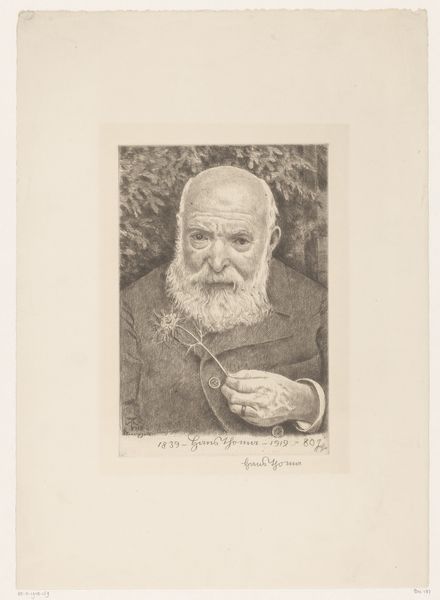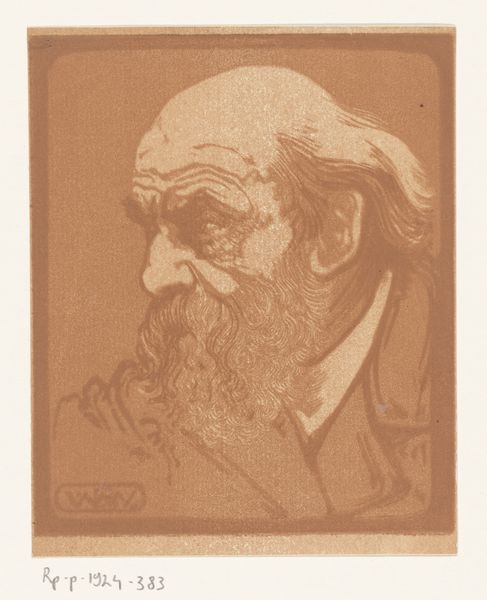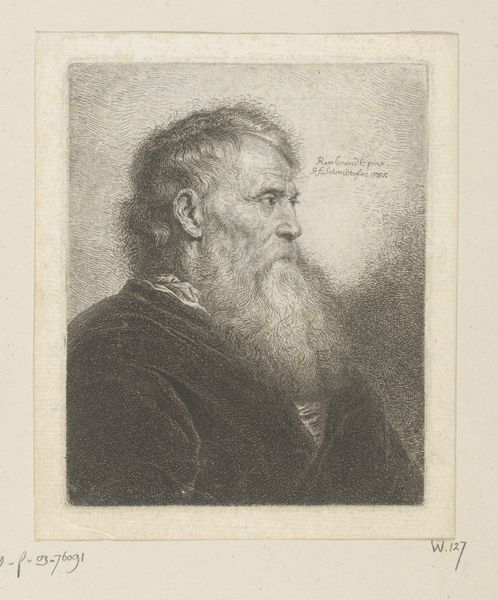
drawing, print, etching, engraving
#
portrait
#
drawing
# print
#
etching
#
pencil drawing
#
men
#
engraving
Dimensions: Plate: 7 13/16 × 5 7/8 in. (19.8 × 14.9 cm) Sheet: 14 3/8 × 11 1/8 in. (36.5 × 28.2 cm)
Copyright: Public Domain
Curator: Looking at this etching by Anders Zorn, created in 1909, it's hard not to be drawn to the figure of Carl Fredrik Liljevalch, whose portrait this is. The original is currently at the Metropolitan Museum of Art. Editor: My first impression is one of somber reflection. There's a quiet dignity in Liljevalch’s gaze, but also a certain world-weariness etched into the very lines of the engraving itself. Curator: Zorn was a master of capturing the spirit of his subjects, and here, Liljevalch’s posture and expression seem to embody a certain turn-of-the-century sensibility. His gaze carries the weight of history, looking beyond the present toward an unknowable future. Notice the play of light and shadow, imbuing this print with a profound depth. Editor: Absolutely. There's a definite connection to late 19th-century artistic and intellectual movements—a weariness with grand narratives perhaps, or a turn inward toward personal experience. This portrait feels particularly salient given the massive shifts underway during this time: rapid industrialization, changing social mores, simmering global tensions, and colonial abuses. All of which are, ironically, bankrolling the patronage of this etching. How do we situate portraits of wealthy, white men like this in our collections without obscuring that social context? Curator: I understand the critique, but don't you think Zorn's technical skill adds another layer of meaning? Consider the way he uses etching lines to create not just a likeness, but also a sense of character, subtly indicating his social class with subtle sartorial queues: expensive coat, tasteful walking stick… These all function as visual symbols of power and status in a stratified society. Editor: Precisely! And by showing us those symbols, Zorn unwittingly lays bare the inequalities of his time. We see Liljevalch not just as an individual, but as a product of his socio-economic milieu. The symbolism of wealth is inextricable from this etching, it should be pointed out in any encounter of it with the public, so not to perpetuate it by ignoring that such objects are rarely ahistorical or divorced from an inequitable historical power dynamic. Curator: Perhaps it's in acknowledging that duality – the artistry and the social commentary – that we can truly appreciate the piece's historical and cultural value. Editor: I concur, it’s in understanding the complete narrative that it resonates profoundly, inviting a reevaluation of the art’s place within today’s cultural milieu.
Comments
No comments
Be the first to comment and join the conversation on the ultimate creative platform.
